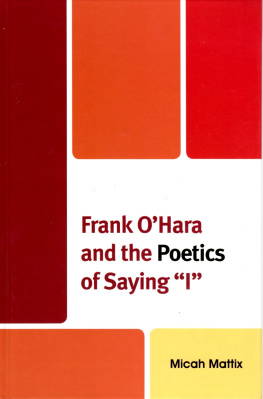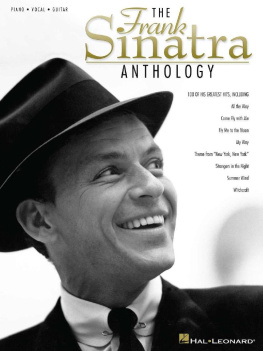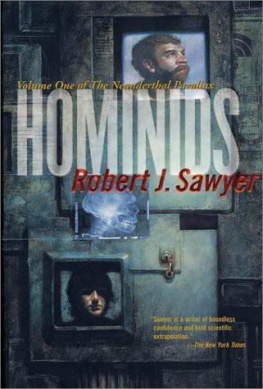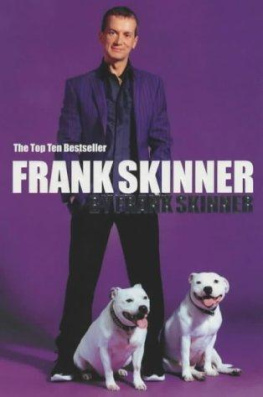PRAISE FOR WE, HOMINIDS
Captivating non-fiction like this is not only an enrichment on the way to more knowledge, but also an excellent narrative read. Algemeen Dagblad
What Laurent Binet does in HHhH, Frank Westerman does in We, Hominids: he starts an intriguing game with his reader. Absolutely fascinating. Bart Gielen, Barts Boekenclub
In We, Hominids, Westerman reaches the apex of his abilities... Vivid, wonderful, entertaining, exotic, captivating. De Standaard der Letteren
Overwhelming, dazzling. A journey through time, across the world, into the earth. Westerman sweeps his audience away through the history of hominids. Dagblad van het Noorden
Where others see nothing more than science, Frank Westerman sees a story. No one can ask complex questions as clearly as he can. And he is a true narrator, too. HUMO
Staggering book by one of our great reportage writers, who answers philosophic questions through amazing life stories... a must-read Althenaeum
Every book by Frank Westerman takes the reader on an extraordinary and unexpected journey. In We, Hominids, you could actually say this even more strongly. [It] offers surprising psychological insights into human singularity... the wanderings of Westerman are about the question of who we are, as humans. Philosopher Hans Achterhuis, de Volkskrant
Published by Black Inc.,
an imprint of Schwartz Books Pty Ltd
Level 1, 221 Drummond Street
Carlton VIC 3053, Australia
www.blackincbooks.com
Copyright 2018 by Frank Westerman
Original title Wij, de mens
First published in 2018 by Querido Fosfor, Amsterdam
English translation copyright Sam Garrett 2021
Frank Westerman asserts his right to be known as the author of this work.
ALL RIGHTS RESERVED.
No part of this publication may be reproduced, stored in a retrieval system, or transmitted in any form by any means electronic, mechanical, photocopying, recording or otherwise without the prior consent of the publishers.
The publisher gratefully acknowledges the support of the
Dutch Foundation for Literature.
9781760642495 (paperback)
9781743821879 (ebook)
Cover design by Tristan Main
Text design and typesetting by Typography Studio
Cover image: Skeleton of man, vintage engraved illustration.
La Vie dans la nature, 1890. Patrick Guenette / Alamy Stock Vector
Illustrations and maps Yde Bouma
Prologue
It took me a long time to find out where he came from. The little prince, who asked me a great many questions, seemed never to listen to mine. It was the words spoken inadvertently that, little by little, told me everything... When he first beheld my airplane... he asked.
What kind of a thing is that?
Its not a thing. It flies. Its an airplane. It is my airplane.
I was proud to have him know that I could fly. Then he cried out:
What! You mean you fell from the sky!
Yes, I replied modestly.
Oh my! Thats funny...
And the little prince started hooting with laughter. That irritated me greatly. I prefer to have my misfortunes taken seriously.
Then he added:
Well then, so you come from the sky too! So which planet are you from?
ANTOINE DE SAINT-EXUPRY, The Little Prince
I T IS WHIT MONDAY IN 2012, and the single-engine Cessna Skyhawk with tail number PH-SJK begins its descent over the town of Ouddorp. For a full minute the pilot pushes the nose down through the clouds, to catch a glimpse of the coastline and his projected course. In the distance, banks of fog rise from the sea. They slide onto the beach in one smooth motion in the same way the first marine animals must once have crept onto land.
Earlier that morning, at 10.22 a.m., the Dutch Meteorological Institute had issued a bulletin, warning pilots about the influx of moist air from the north-west. It is going to be a glorious day, but along the coast there is a chance of scud and frequent mist.
The kind of mist the pilot sees rising up before him occurs, on average, once every two years and is known as sea fret. The name stems from the optical illusion of boiling surf: the waves do not merely splash, they steam like kettles.
At 11.19 a.m. the plane reaches the bottom of its dive: 450 feet, the distance covered by someone with a large shoe size taking 450 steps heel-to-toe. Place that distance on end and youve got an imaginary ladder to the clouds, which you can then climb right up. It wont take long.
As soon as the pilot has eyed the landscape, he pulls back on the Skyhawks joystick and climbs. Engine purring deeply in the background, he banks towards the open sea, hoping to fly around the upcoming mist. It is 11.20 a.m. (only one minute after the dip beneath the clouds) when PH-SJK establishes radio contact with the control tower at Rotterdam Airport. The pilot asks permission to land along the hotel approach, swinging in over the estuary of the rivers Meuse and Rhine, and then eastward above the New Waterway the same route taken by the oil tankers and container ships, but higher.
The towers code is PAPA. At its foot lies the runway, glistening like an unfurled carpet in the sun. It is all, quite literally, smooth sailing.
This is Rotterdam information PAPA, the air traffic controller responds. He tells the pilot to climb to 1500 feet and call in again above the town named Hook of Holland.
Considering its course, cruising speed and position on the radar, PH-SJK should be at the appointed spot within five minutes. But PH-SJK does not call again. Never, and to no one.
An inhabitant of Ouddorp is the last to get a visual fix on the red-and-white Cessna: the man sees the tail of the four-seater dissolve into the clouds above the row of dunes.
AT THAT SAME MOMENT, A FEW MINUTES flying time north of Ouddorp, a group of parents and children arrive for an outing on the FutureLand Express, a powerfully built train consisting of a farming tractor pulling two trailers converted into passenger compartments.
The passengers are elated; they are among the first who will be dropped on virgin territory. The newly reclaimed Maasvlakte 2 is still virtually untouched terrain. Physically speaking, the hop down from the running boards onto this new land-in-sea is only one small step; still, it feels like something important, like something that has to do with all of us.
From the concrete platform at the edge of the existing harbour grounds, the FutureLand Express is scheduled to depart at noon sharp. The morning sky is blue, but just before noon it clouds over. A breeze comes up, the temperature drops. The three-bladed GREEN-CHOICE turbines stir rather forlornly in the mist, mixing the silty sea air with the factory smoke from the harbours.













